Written by Oluwo Fayemiwo Olokun
Agganyu also spelled Aganyu, Agganju, Argayú or Agayu Sola) is the orisha of volcanos. He is also the ferryman that helps people cross the river, and some lineages say Aggayú is the orisha of deserts. There is some confusion around whether Aggayú is the father or the younger brother of Changó, but in the Santería Church of the Orishas we regard him as Chango’s father. Aggayú is very much a protective father orisha who supports and lends strength to a person’s life, and is considered the cane or “support” of a person’s ocha. He has a bellicose temperament and is known for losing his head in heated moments. (Changó shares this quality especially when he was younger). Aggayú and Chango are considered inseparable in many ways and it is interesting to note that Olorishas who are crowned Shango receive Aggayú at their Kariocha ceremony. Aganyú wields a unique double axe with an anchor-like handle as his tool. He teaches us the importance of being strong, steady and level-headed in life, and he supports us through trials and tribulations.
Aggayu is responsible for creating new land through the forces of vulcanism, plate tectonics and through sediment being washed down rivers and deposited in new areas. Patakis (legends) talk about his hard work striding across the lands, building new mountains, carving the pathways of new rivers and his various relationships with several of the female orishas. In particular, Aggayu has a deep infatuation and love for Oshun. One pataki (from the odu 5-9) recalls a time when Aggayu was ferrying people across a river and he fell in. Aggayu cannot swim and quickly started to drown. It was Oshun who helped pull him out of the river using an oar and saved his life. Aggayu fell in love with Oshun from then onward.
Aggayu does not have caminos or “paths” like some of the other orishas, because he is singular in nature. Some of the confusion around whether Aggayu is Chango’s father or brother is due to the fact that there were living people named Agganyu who were also Alafin of Oyo (Chiefs of Oyo – like Chango). Some consider these men to have been incarnations of Aggayú, where others see them as individual who were initiated to the orisha Aggayú and whose legacies were absorbed into the corpus of legends around Aggayu. While the standard practice in modern times is that all priests of Changó will receive Aggayú in their kariocha initiation, most other olorishas do not receive Aggayú at their initiation. He is typically received later as an orisha addimú.
Aggayu is not crowned directly to a person’s head in the kariocha ceremony, but is instead initiated through a unique ritual process called “Chango oro Aggayú” in which Chango is placed on the initiate’s head and Aggayu is placed on the initiate’s shoulder. There are many reasons cited for this practice. Some claim that Aggayu’s energy is too volatile to crown directly on a person’s head. Others say that you cannot crown Aggayu on a person’s head because he didn’t go to the godparent’s head. I personally believe that there may be political significance in Yoruba history, where the worship of the orisha Chango’s eclipsed and overtook that of Aggayu’s, explaining the difference in the initiatory practice.
Symbols, Numbers, Colors and Attributes of Aggayú
Agganyu’s eleke is made of brown and milky beads with nine different colored beads in a repeated pattern
Number: 9
Sacred Place in Nature: the volcano, the river’s edge or the desert
Colors: brown and 9 different colors (no black)
Tools: double headed axe with anchor-like hook on the handle
Temperament: bellicose, moody
Syncretized Catholic Saint: Saint Christopher
Aggayú’s Caminos (Avatars or “Roads”)
Aggayu is singular in nature and has no roads or avatars.
Offerings for Aggayú
Aggayu has a healthy appetite and enjoys rich food. He loves dry white wine, cornmeal porridge with okra, bananas, mangos, he goat, rooster, pigeons, and guinea hen. All offerings for Aggayu should be marked through diloggún divination for best results.
Amalá Ilá for Aggayú (Cornmeal porridge with okra)
Amalá ilá is a wonderful offering for Aggayu and is one of his favorite things to eat. It is prepared using yellow cornmeal and 9 whole okra pods. Start by bringing three cups of water to a boil. Season the water with a healthy pinch of salt. Measure out one cup of cornmeal. Cut up the okra into pieces and set them aside. While continually whisking the boiling water, slowly add in the cornmeal with your hand. It is important to whisk the mixture constantly so that it doesn’t clump while it incorporates into the water. Once all of the cornmeal has been added, toss in all of the okra except for 9 pieces, a bit of red palm oil for seasoning, and reduce the temperature and cook it on low. Stir it regularly or it may burn on the bottom. Cook the cornmeal for about ten minutes. You may need to switch to a wooden spoon as the mixture will thicken quickly. Serve in a bowl and decorate the top of it with the nine remaining pieces of okra. Place Aggayu’s lebrillo (pot) on a grass mat (estera) and place the bowl of amalá ilá next to him. Leave the offering there for the time indicated by your divination before hand, and once the time has come, remove the amalá ilá and dispose of it at the river’s edge with 9 pennies.
Pineapple for Aggayú
A whole fresh pineapple is an easy and delicious addimú to give Aggayú. Simple purchase a whole pineapple, wash it well, then cut off the top and set that aside. Next remove the bottom of the pineapple and using a knife and throw it away. Carefully remove the outer rough peel of the pineapple and also throw that away. Lay the freshly peeled pineapple on its side and cut it into 9 slices. Place the top of the pineapple on a platter and place the nine slices of pineapple around the leafy top (I like to overlap them a bit to create a pretty pattern. Finally put a dab of palm oil in the center of each slice. Place Aggayu’s container on a grass mat (estera) and place the platter of pineapple slices beside him as an offering. Leave the addimú in place for the required time then dispose of it in nature with 9 pennies as determined through diloggún divination.
 Ọmọ Oòduà Naija Gist | News From Nigeria | Entertainment gist Nigeria|Networking|News.. Visit for Nigeria breaking news , Nigerian Movies , Naija music , Jobs In Nigeria , Naija News , Nollywood, Gist and more
Ọmọ Oòduà Naija Gist | News From Nigeria | Entertainment gist Nigeria|Networking|News.. Visit for Nigeria breaking news , Nigerian Movies , Naija music , Jobs In Nigeria , Naija News , Nollywood, Gist and more

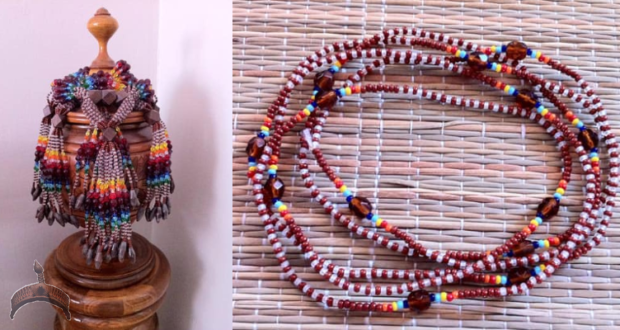
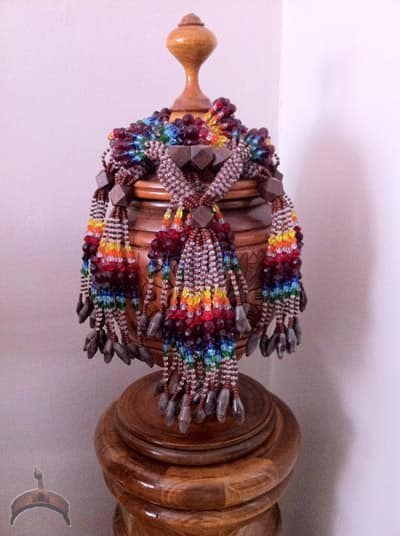


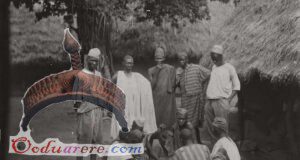
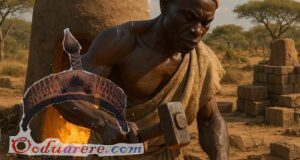
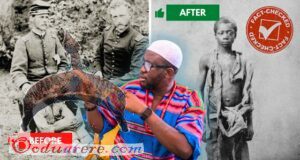

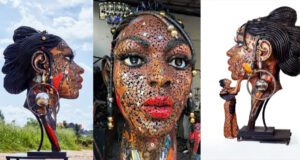

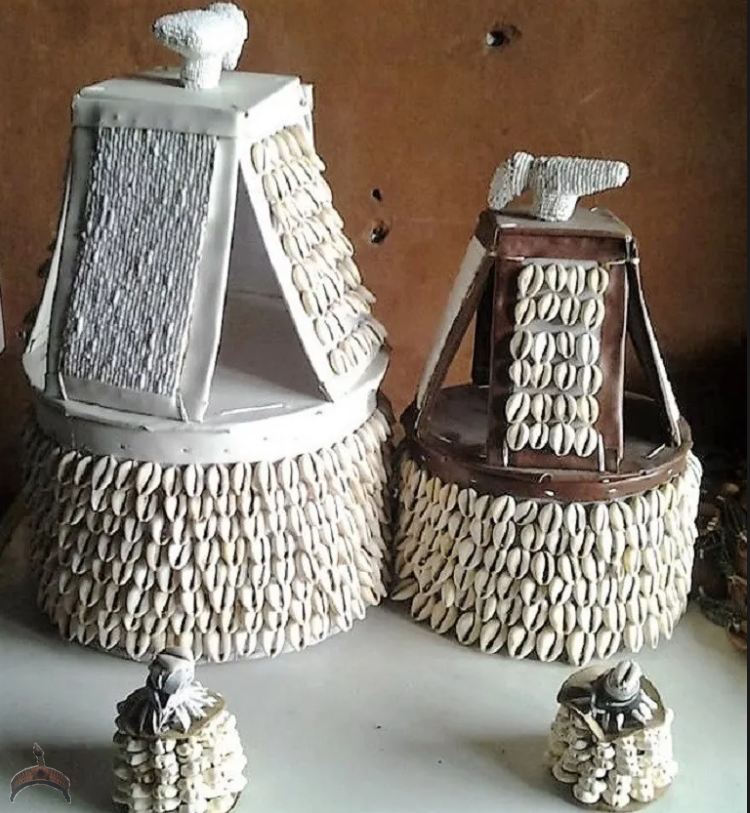
One comment
Pingback: Facts about Orisha Agganyu – Naija Curator